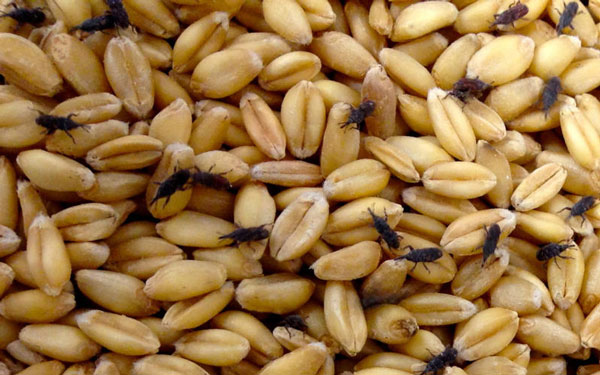How do insects 'tame' the bacteria?
How are 'tamed' insects living bacteria symbiosis with me? Scientists have accidentally answered the question thanks to an accident two years ago.
Two years ago, a 71-year-old Indiana man slanted his arm into a tree after cutting off the branches of a dead apple tree, causing an infection that led the scientists to The University of Utah comes to discover a new bacterium and solve the mystery of how bacteria come to live inside insects.
Because the new strain of bacteria is very easy to grow in the laboratory and is related to Sodalis, an endosymbiotic bacterium inside the intestine of insects, it is possible to alter this new bacterial genetics, because So researchers can prevent the spread of disease by insects like tsetse flies and prevent crop damage by insect viruses.

"If we could genetically modify a bacterium and then bring it back into the insect's body, it could be used as a way to fight insects transmitted by insects , " said Adam. Clayton said. Adam Clayton is a doctoral student in research at the University of Utah and the first author of a study to announce the new bacteria and its genome.
The study was published yesterday, November 15, at the Public Library of Science in PLoS Genetics.
It shows: "The origin of symbiotic relationships is mutually beneficial between bacteria and insects ," said Kelly Oakeson, one of the study's lead authors. "There are bacteria in the imaging environment." into symbiotic relationship with insects. This is the first time such a bacterium has been found and studied. "
Colin Dale, the lead author of the study and an associate professor of biology, said the insects chose a pathogen that is widespread in the environment and then 'tamed' it.
Another theory compared to the above conclusion is that parasitic wasps and ticks spread symbiotic bacteria from one insect to another. However, Dale said that this theory cannot explain why, many insects vary so much in both position and diet and have the same bacteria.
The new study supports the hypothesis that insects are infected by bacteria that cause disease from plants or animals in their habitats, and that bacteria grow to become less toxic and provide benefits to insect. Then, instead of spreading to other insects, bacteria spread from mother insects to their children.
This research is funded by the National Science Foundation and the National Institutes of Health.
- Eating crickets and insects is very good for the intestinal tract
- How did humans tame cats?
- Insect-eating insects like to eat
- Why can't tame tigers or rhinos?
- Bacteria can regulate the sex of the host
- Set of brilliant photos showing off
- Detecting 16 harmful insects in coffee plants
- The most toxic and strange forms of bacteria on the planet
- Check out the types of polar bacteria that are beneficial to humans
- Artificial light is easy to cause infectious disease
- Assassin insects in nature
- What will happen if insects disappear from Earth?
 Why do potatoes have eyes?
Why do potatoes have eyes? 'Tragedy' the world's largest carnivorous life: Death becomes ... public toilet
'Tragedy' the world's largest carnivorous life: Death becomes ... public toilet Tomatoes were once considered 'poisonous' for 200 years
Tomatoes were once considered 'poisonous' for 200 years Detecting microscopic parasites on human face
Detecting microscopic parasites on human face What was Earth like in the age of giant insects?
What was Earth like in the age of giant insects?  Why does nature produce so many blood-sucking insects?
Why does nature produce so many blood-sucking insects?  How insects help find clues to rhino poachers?
How insects help find clues to rhino poachers?  Danger lurks inside the mountains where birds sing and insects chirp
Danger lurks inside the mountains where birds sing and insects chirp  How do insects find pollen?
How do insects find pollen?  Do insects feel pain like humans?
Do insects feel pain like humans? 